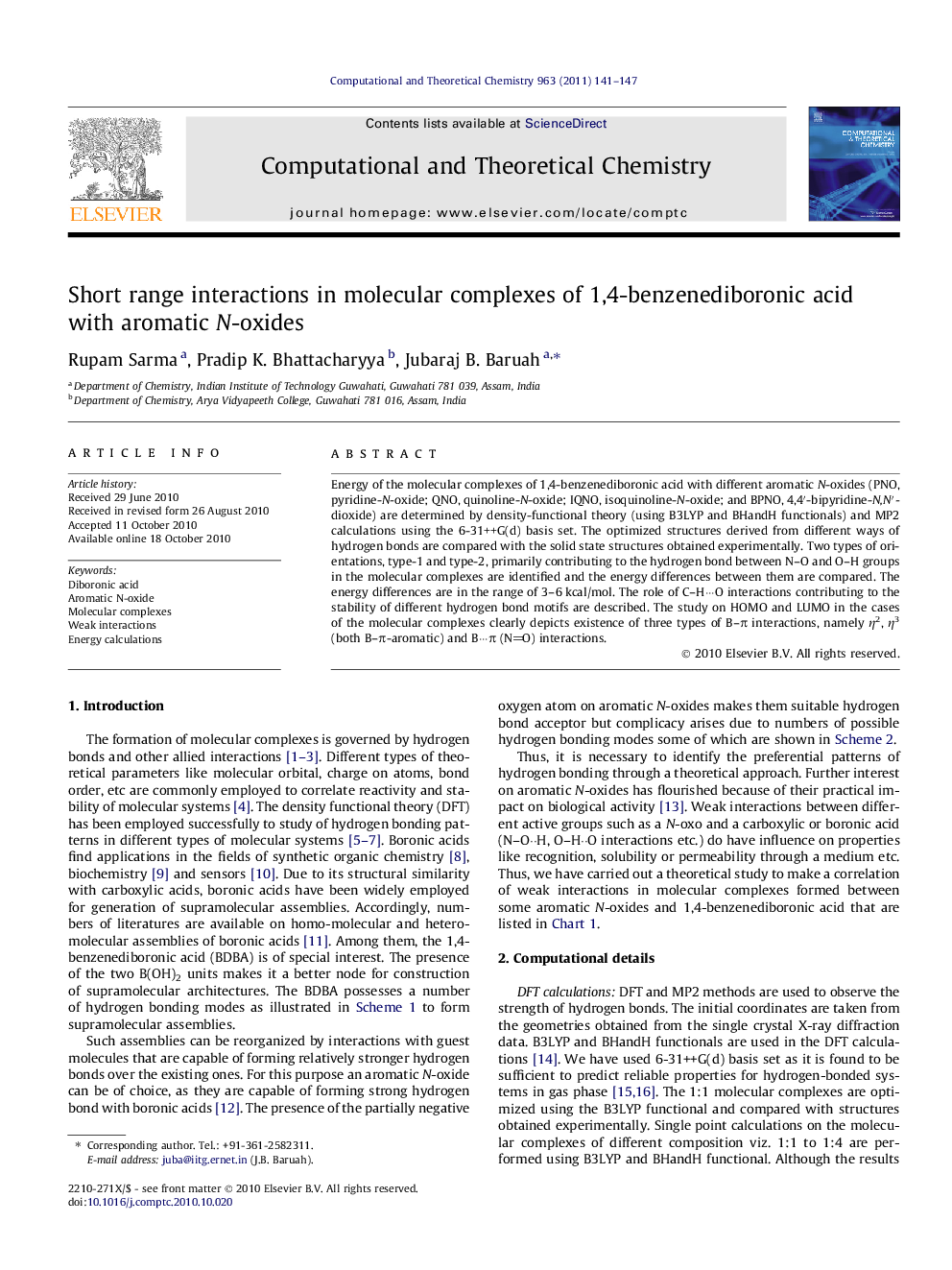| Article ID | Journal | Published Year | Pages | File Type |
|---|---|---|---|---|
| 5395438 | Computational and Theoretical Chemistry | 2011 | 7 Pages |
Abstract
Energy of the molecular complexes of 1,4-benzenediboronic acid with different aromatic N-oxides (PNO, pyridine-N-oxide; QNO, quinoline-N-oxide; IQNO, isoquinoline-N-oxide; and BPNO, 4,4â²-bipyridine-N,Nâ²-dioxide) are determined by density-functional theory (using B3LYP and BHandH functionals) and MP2 calculations using the 6-31++G(d) basis set. The optimized structures derived from different ways of hydrogen bonds are compared with the solid state structures obtained experimentally. Two types of orientations, type-1 and type-2, primarily contributing to the hydrogen bond between N-O and O-H groups in the molecular complexes are identified and the energy differences between them are compared. The energy differences are in the range of 3-6 kcal/mol. The role of C-H···O interactions contributing to the stability of different hydrogen bond motifs are described. The study on HOMO and LUMO in the cases of the molecular complexes clearly depicts existence of three types of B-Ï interactions, namely η2, η3 (both B-Ï-aromatic) and BÂ·Â·Â·Ï (NO) interactions.
Related Topics
Physical Sciences and Engineering
Chemistry
Physical and Theoretical Chemistry
Authors
Rupam Sarma, Pradip K. Bhattacharyya, Jubaraj B. Baruah,
